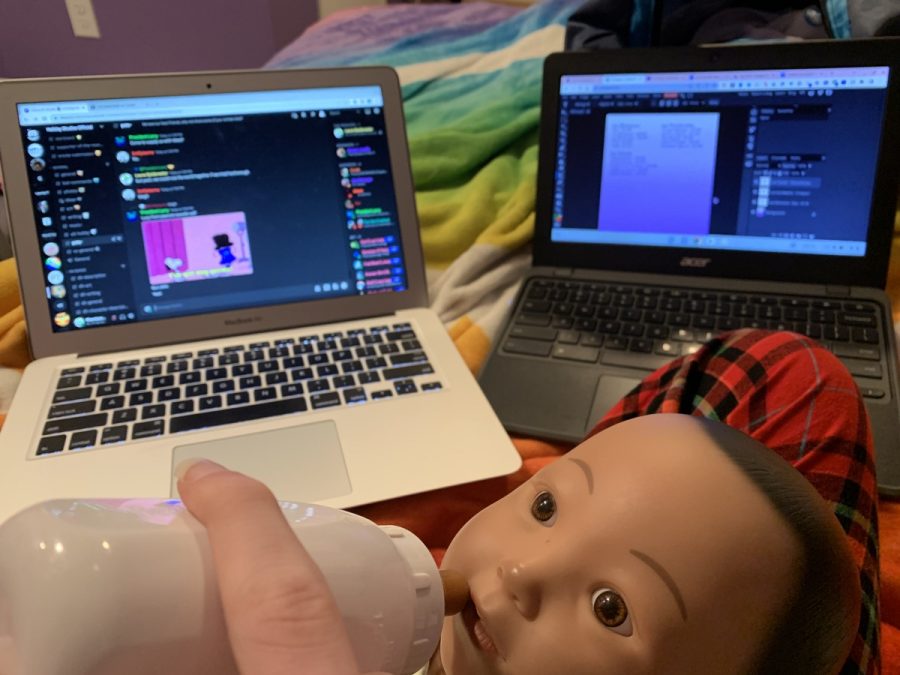It Ain’t Over ‘Til the Fat Baby Sings
Sophomore Laura Rairdin-Hale feeds her RealCare baby as she does homework, 2022
January 5, 2023
Every Central student knows that school has officially started when the plastic babies start to roll out. As part of Child Development 1 curriculum, the babies are a known staple after school as students take them home and come back to school the next day with dark circles a mile wide and reporting that they never want kids. The class is said to be an easy A and elective credit, but it seems to be an effective way to get students to avoid sex, or at least make sure it’s protected. For students who decide to take the RealCare Baby home, they are expected to take care of the needs of the squalling robot quickly and correctly. There are four things to do when the baby cries; feed, burp, change, and rock. The baby records everything you do, including how long you leave it in the car seat and what clothes it wears. Students have 2 minutes to take care of the baby before it records a missed care and takes points off of their grade. They also have to keep the baby at a regulated temperature, and make sure nothing happens to it, such as forgetting to support the head when holding, or rough handling. Baby makes more noise than simply crying, however. It also coos, giggles, burps, and breathes. It’s a great way for teenagers to practice taking care of a child, and even the life of a single parent if no one is willing to help the student.
The babies were created by a couple who thought that students carrying around an egg or a sack of flour was not a true-to-life experience. Rick Jurmain- a literal rocket scientist -was given the idea when his wife, Mary, commented that he should make something that is realistic. The first model was very different from the final product, including a key that needed to be turned in order for the baby to stop crying. The babies now are much different and more tech-oriented, and can cost $1000 and up to replace if lost or broken. The babies need different things and the difficulty and the times it needs care are randomized, but the patterns it has are based on real parents’ experiences.
The babies are used all over the United States in 67% of school districts, and for many different curriculums and classes. While difficult to handle, the babies are a great way to educate children.






